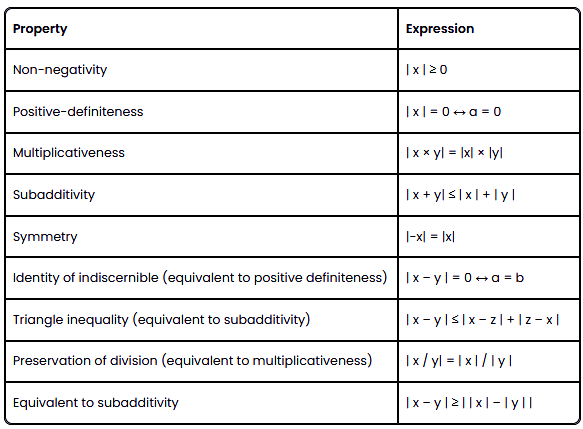The absolute value of a number refers to the distance of a number from the origin of a number line. It is represented as |a|, which defines the magnitude of any integer ‘a’. The absolute value of any integer, whether positive or negative, will be the real numbers, regardless of which sign it has. It is represented by two vertical lines |a|, which is known as the modulus of a.
Absolute value of a number:
The absolute value of a number or integer is the actual distance of the integer from zero, in a number line. Therefore, the absolute value is always a positive value and not a negative number.
We can define the absolute values like the following:
{ a if a ≥ 0 }
|a| = { -a if a < 0 }
Note: There is no absolute value for 0 because the absolute value changes the sign of the numbers into positive and zero has no sign.
If the number is positive then it will result in a positive number only. And if the number is negative, then the modulus of this number will also be a positive number. It is denoted as |n|, where n is an integer.
Absolute Value Symbol:
The symbol of absolute value is represented by the modulus symbol, ‘| |’, with the numbers between it. For example, the absolute value of 9 is denoted as |9|.
The distance of any number from the origin on the number line is the absolute value of that number. It also shows the polarity of the number whether it is positive or negative. It can be negative ever a s it shows the distance and the distance can’t be negative. So, it is always positive.
Absolute value of a Number examples:
- |-1| = 1
- |-14| = 14
- |1| = 1
- |0| = 0
- |7| = 7
- |7-2| = |5| = 5
- |2+3| = |5| = 5
- |-3×5| = |-15| = 15
Absolute value function
The absolute value function is given by f(x) = |x| such that:
- |x| = +x for x > 0
- |x| = -x for x < 0
Absolute value properties:
If x and y are real numbers and then the absolute values are satisfying the following properties:
